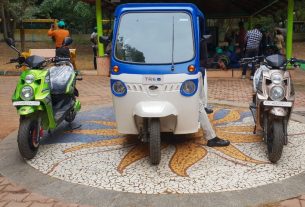The Bengaluru Traffic Police hopes to solve the city’s traffic management by introducing an adaptive traffic management system.
Surbhi Shah
Standing at one of the busiest junctions in Cubbon Park, city traffic police officer Ramanaswamy was hopeful at the prospect of installation of adaptive signals in Bengaluru, for he will not have to change the signal manually as he does now by standing in the scorching sun, analysing the traffic flow and changing the signals accordingly.
“Traffic flow is non-stop and to manage the signals manually becomes difficult. It will be very effective to the traffic cops along with the commuters if the adaptive signals were installed. It will help save commuters’ time and fuel too,” said Ramanaswamy.
The Bengaluru City Traffic Police is set to introduce the new technology of adaptive traffic signal system under Phase II of the B-TRAC (Bangalore Traffic Improvement Project). The plan has been in the pipeline for the past three to four years, but it will now be enforced after the Karnataka Road Development Corporation (KRDCL) has issued the tender.
Around 363 traffic signals will be upgraded to the adaptive mode. The installation of the signals is estimated to be at a budget of around Rs 60 crore to Rs 80 crore but it is not finalised yet, as per the traffic police department.
“The project is with the engineers of Bharat Electronics Limited (BEL) who are working on the signals. After the signals are ready, we will install it at one junction and analyse it on a pilot project if the new system will work with the Bengaluru’s traffic flow or not. If it works, we will upgrade all the other signals,” said traffic police sub-inspector Redkar Prasad.
He added that the pilot project will start in two to three months as soon as the adaptive signals are ready.
Pradeep, a daily commuter, was stuck in traffic, waiting in his car with beads of sweat dripping down his head and a look of frustration to reach his destination. He said, “Traffic signals are not a problem. Problem is with the narrow roads and people violating the traffic rules. The roads are not wide enough and it creates additional traffic.”
Adaptive Traffic Signal Control System (ATSCS) includes vehicle detectors, signal controller, traffic light aspects, poles, power supply and other related accessories needed for the installation.
The Traffic Police Department is initiating these facilities under BTRAC. The strategies of BTRAC include setting up of around 440 signals; signals to be vehicle actuated, networked, adaptive and controlled by the Traffic Management Centre; centrally automated Traffic Enforcement Systems, etc.
Bhubaneswar, Odisha, has tried and tested the system successfully by installing the adaptive systems at 50 junctions. Ahmedabad and Pune are also looking for implementing the new technology to regulate the traffic flow in the cities.



